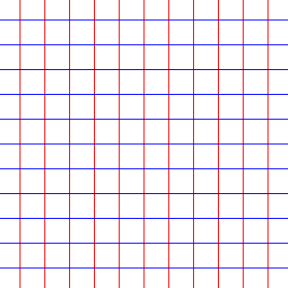Special conformal transformation
In mathematical physics, a special conformal transformation is a type of spherical wave transformation and an expression of conformal symmetry.
Special conformal transformations arise from translation of spacetime and inversion. The inversion can be taken[1] to be multiplicative inversion of biquaternions B. The complex algebra B can be extended to P(B) through the projective line over a ring. Homographies on P(B) include translations:
The homography group G(B) includes
which provides the action of a special conformal transformation.


Vector presentation
A special conformal transformation can also be written[2]
It is a composition of an inversion (xμ → xμ/x2), a translation (xμ → xμ − bμ), and an inversion:
Its infinitesimal generator is
References
- ^ Arthur Conway (1911) "On the application of quaternions to some recent developments of electrical theory", Proceedings of the Royal Irish Academy 29:1–9, particularly page 9
- ^ Di Francesco; Mathieu, Sénéchal (1997). Conformal field theory. Graduate texts in contemporary physics. Springer. pp. 97–98. ISBN 978-0-387-94785-3.





